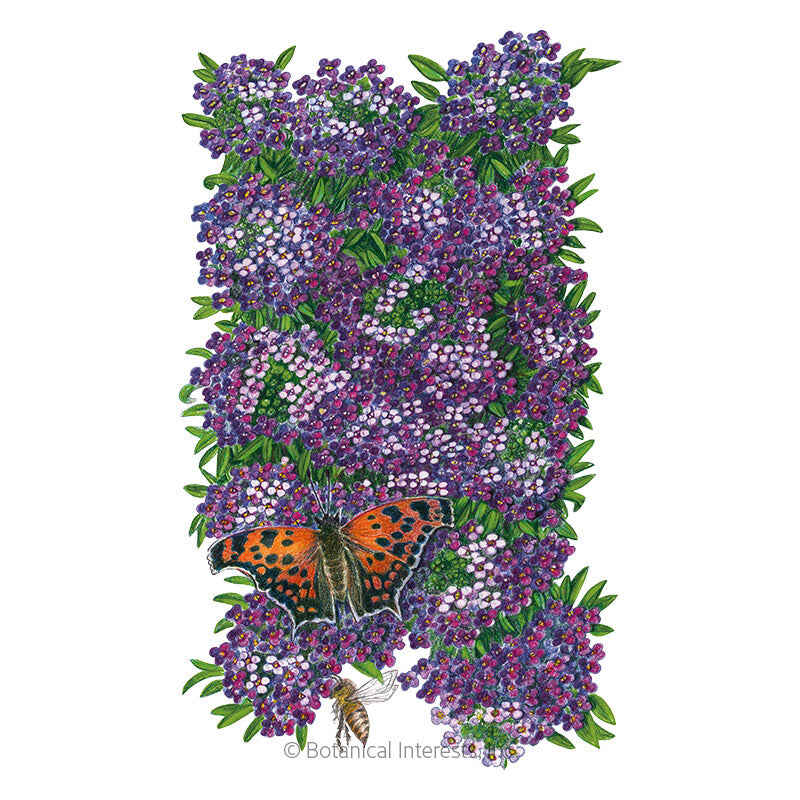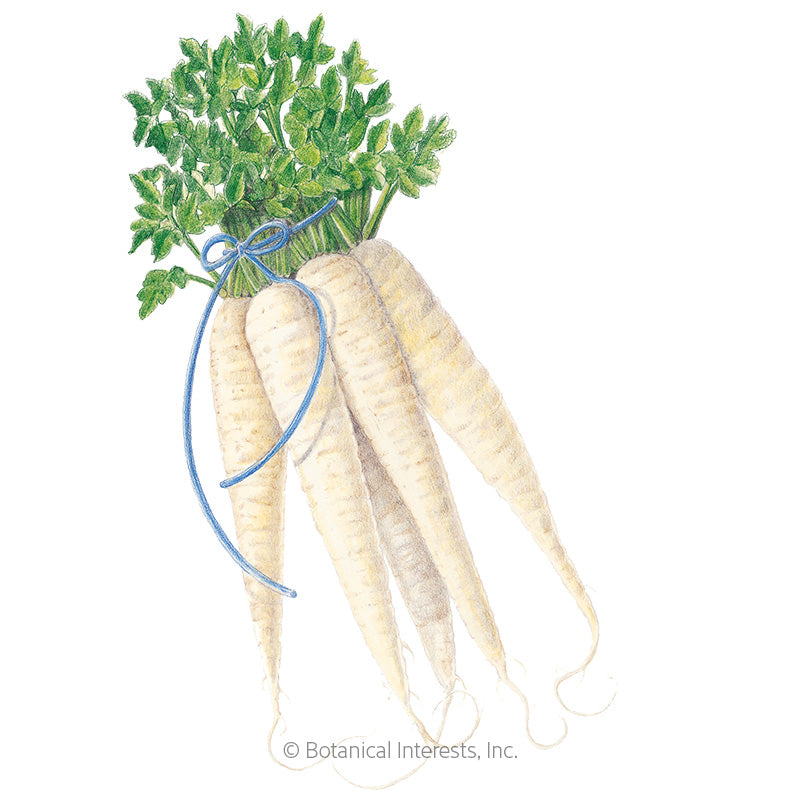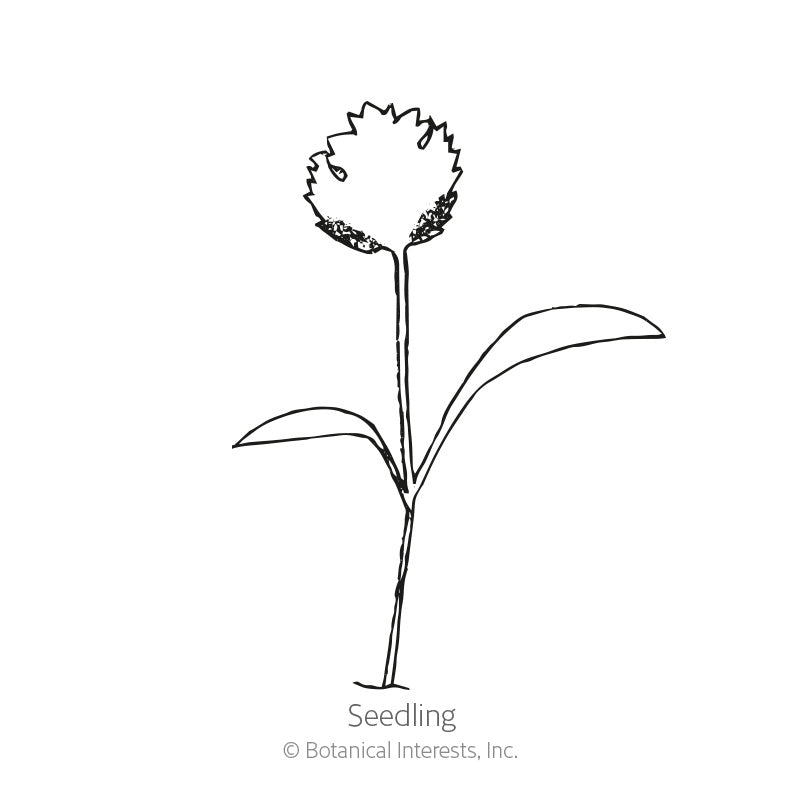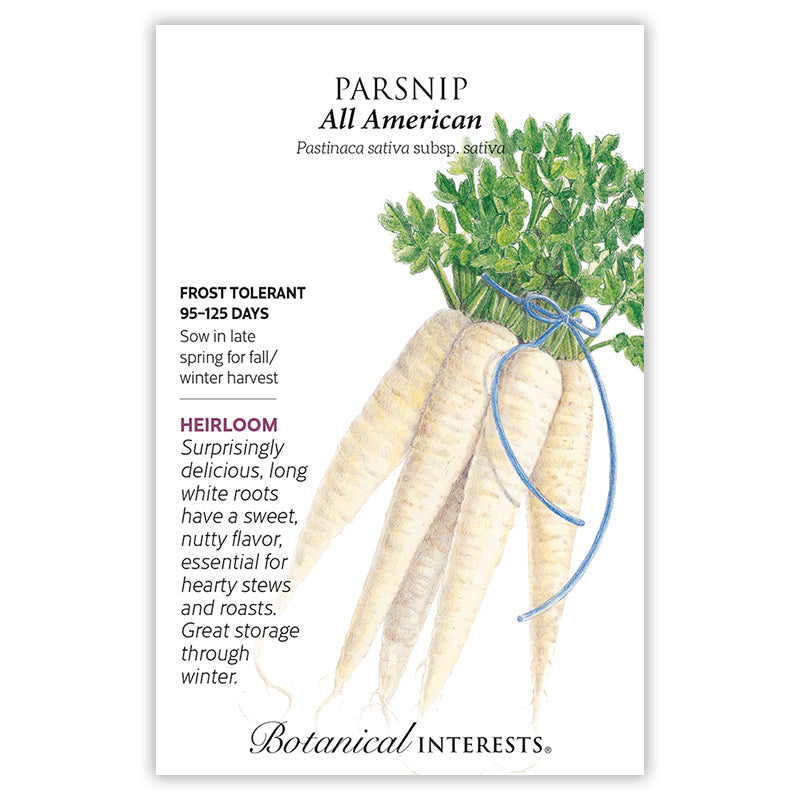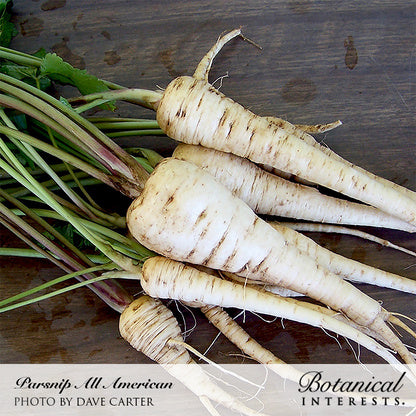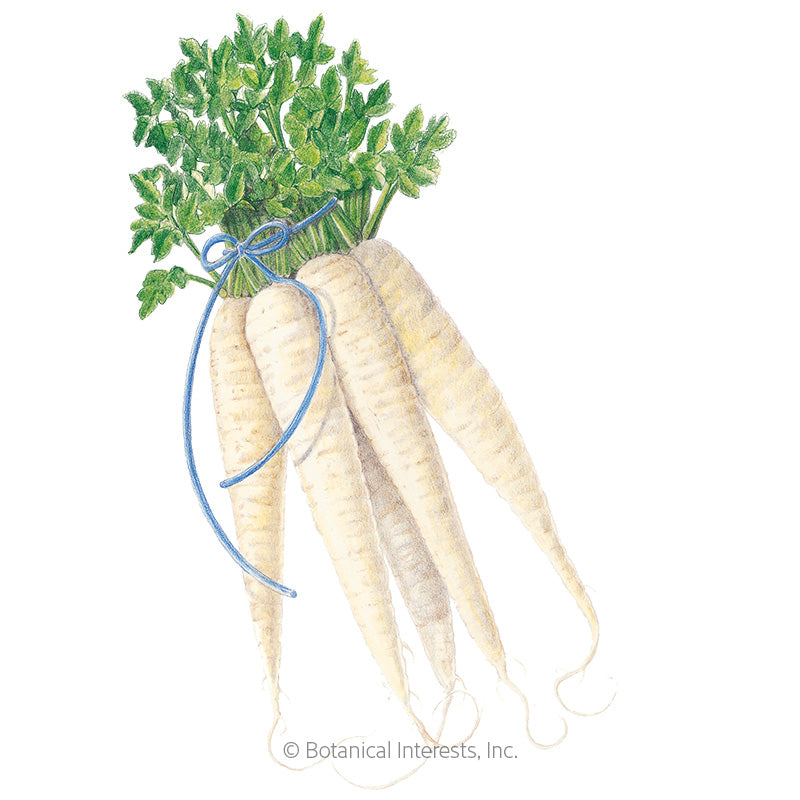
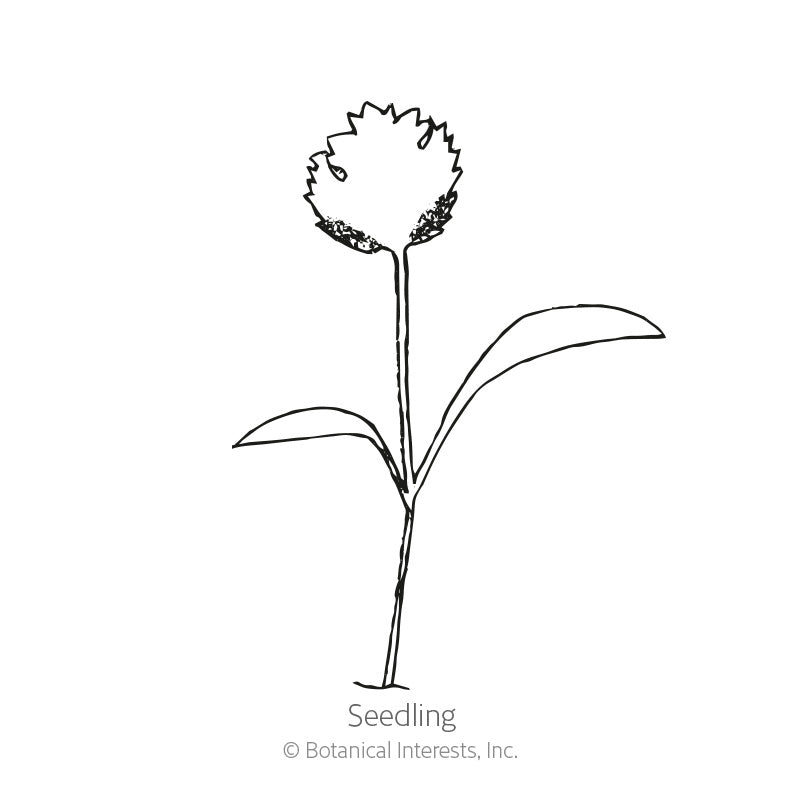
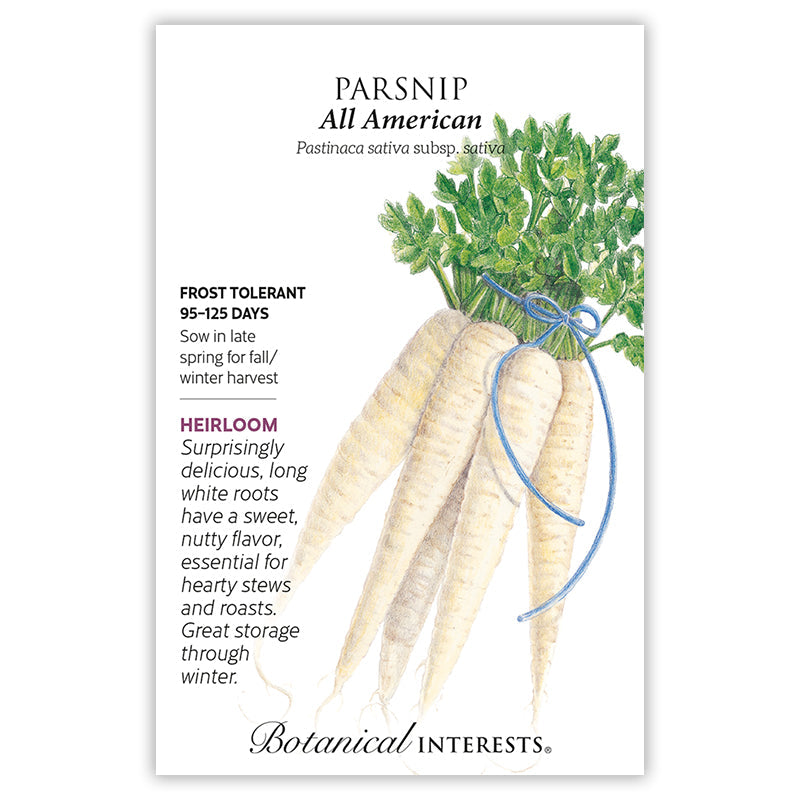
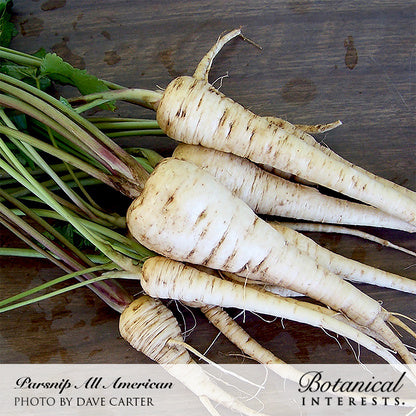
- Variety Info
- Sowing Info
- Growing Info
- Learn More
Variety Info
Days to Maturity: 95–125 days
Family: Apiaceae
Native: Eurasia
Hardiness: Biennial grown as annual. Roots can be harvested in fall after a few frosts or left in ground through winter for harvest before tops begin growth in spring.
Exposure: Full sun
Plant Dimensions: Roots are up to 12" long and the tops (shoulders) up to 3" across.
Variety Info: Creamy-white, tapered roots; leaves are similar to carrot foliage, but much broader.
Attributes: Frost Tolerant

Sowing Info
When to Sow Outside: RECOMMENDED. Late spring or early summer, about 4 months before your average first fall frost date. Mild Climates: Sow in fall for harvest the following spring. Ideal soil temperature for germination is 50°–70°F.
When to Start Inside: Not recommended.
Days to Emerge: 10–25 days
Seed Depth: ½"
Seed Spacing: A group of 3 seeds every 3"
Row Spacing: 18"
Thinning: When 4" tall, thin to 1 every 3"
Your hardiness zone is
Growing Info
Harvesting: To harvest parsnips, dig them up with a shovel or garden fork being careful not to cut or damage roots. If you wish to harvest before winter, leave parsnips in the ground for at least 2 weeks after a hard fall frost. You can improve the sweetness by storing at 32°-34°F for 2 weeks before using. If you leave parsnips in the soil over winter, throw a few inches of soil over the crowns and mulch heavily with straw or compost after the first fall frosts. During extended cold periods, stored starches are changed to sugar as the first-year plants prepare for new growth, thus roots harvested in early spring are especially tender and sweet. The roots lose flavor and become fibrous if you do not harvest them before new tops and seed stalks begin to grow.
